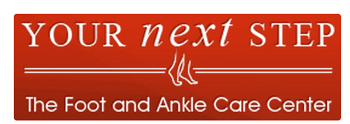Wear and tear – or overuse – of the big toe joint can cause degenerative arthritis. This condition, called hallux rigidus (meaning rigid or stiff big toe) causes the toe to be painful and difficult to bend.
Whether you realize it or not, you use your big toes all day long for the simple tasks of walking, stooping, climbing stairs and even standing in one spot. When one or both big toes are painful, even everyday activities can become difficult.
Individuals often mistake this condition for a bunion, which is a painful swelling that develops on the joint of the big toe. The symptoms are similar but the causes are very different. Hallux rigidus is really osteoarthritis of the toe joint and occurs with overuse, especially in patients who have other foot function abnormality like excessive pronation, or a foot deformity like flat feet.
Hallux rigidus may also run in families who have certain types of foot structures. Gout or rheumatoid arthritis can also cause this condition. Often, workers who must squat at their jobs develop hallux rigidus from the extra stress on the toe joints.
Hallux Rigidus Symptoms
When the arthritis is mild or moderate in the toe joint and it’s not quite so stiff, the condition is called hallux limitus. At this stage, the toes may be painful and stiff while moving or standing. Cold and damp weather usually aggravates the symptoms. You may have joint swelling and inflammation, and it can be difficult to run.
In later stages, your toes will be painful even during the night or when you are resting. Often bone spurs appear on top of the toe bones, making it even more difficult to bend. Because of the pain, patients often change their walking style to avoid the pain which in turn can cause back, knee or hip pain.
Left untreated, the toe’s flexibility and motion continue to decrease until it is stiff and mobile, a condition called a “frozen joint.”
Treating Hallux Rigidus
At Your Next Step, once we’ve confirmed our diagnosis, we’ll begin with non-invasive treatments including:
Fitting you with custom orthotics to redistribute foot pressure and improve function.
- Wearing different shoes with plenty of room in the toe box to prevent pressure on the toe joints.
- Physical therapy to work on increasing range of motion.
- Cortisone injections at the site to reduce inflammation.
- Oral anti-inflammatory medications like ibuprofen to both relieve pain and inflammation.
In advanced cases or where there is severe pain, surgery may be indicated.
Don’t Wait To Call for Help with Toe Pain and Rigidity
Hallux rigidus won’t get better on its own – in fact, it will only get worse. If you or a family member suffers from toe pain, contact Dr. Eric Ricefield, Dr. Mark Yagodich and Dr. Aliza V. Eisen, board certified or qualified podiatrists. You can reach us with the contact information at the website for our Ardmore, Paoli and Downingtown offices. Call today to ease the pain of hallux rigidus.
